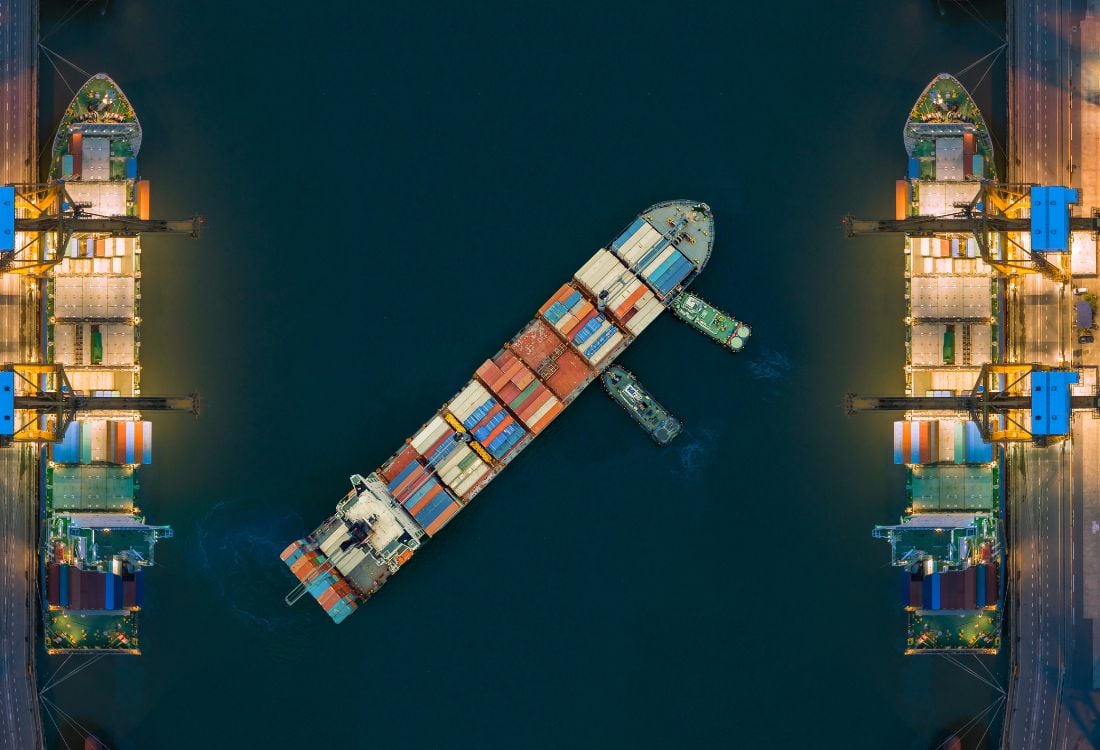
As we enter the final quarter of 2023, the UK logistics sector is in a fairly strong position after a tumultuous few years. Challenges remain, however, in the shape of stubbornly high global energy prices, the ongoing challenges of Brexit, staff shortages, and decarbonisation. As one of the fastest growing industries globally due to the rise in online supply transactions for both B2C and B2B facing industries, there is also a pressing need for fast delivery, real-time data visibility, and continual stock availability in order to keep up with the ever-changing demands of customers.
How can new technologies and trends assist logistics businesses to meet customer expectations as the sector continues to evolve throughout 2024?

Use Of Robotics And Automation In Warehouses
The use of robots can increase throughput and efficiency throughout the entire logistics process, from loading and unloading, box packing/unpacking, to palletising and pick and pack operations. Automated picking machines, conveyors, and sorters, for instance, can deliver greater consistency, efficiency, and accuracy in the warehouse, while reducing costs arising from human error. By investing in automation, the value of your human workforce can be optimised and increased, and errors minimised, resulting in faster delivery times, increased customer satisfaction, and wider margins.
Warehouse automation can involve significant capital outlay. However, at a time when many logistics businesses face chronic skills shortages and problems arising from an ageing workforce, targeted investments in automation may deliver a stronger ROI than relying on additional recruitment and up-skilling strategies on their own.
Increase In Multi-modal Logistics Solutions
Multimodal logistics involves a combination of land, sea, air, and rail transportation modalities to achieve the most efficient delivery outcomes, overcoming the problem of congested roads leading to slower delivery times. This isn’t solely a problem for the UK road network – the rise of e-commerce has led to a huge increase in the volume of goods transported by road across the world – but it has certainly placed a visible strain on the country’s overcrowded and often poorly maintained motorway network.
For long distance deliveries or shipments of large volumes of goods, diversifying your shipping methods through a flexible and multimodal transport approach could maximise your chances of successfully delivering goods on time and within budget.
Collaboration Between Digital Platforms And Logistics Companies
The introduction of new digital purchasing and supply chain management technologies into the sector, including blockchains, machine learning, and the Internet of Things, have made it easier for businesses to achieve end to end supply chain visibility. Investing in digital logistic platforms can provide better and more accurate real-time data on location, temperature, and other critical parameters of goods, facilitating smoother communication between suppliers, customers, and 3PLs to create a smarter and more streamlined supply chain.
Sustainability
The march towards decarbonisation has made sustainability a central issue for the logistics sector and will continue to shape customer expectations and service delivery strategies in the coming year. In the face of climate change and social expectations, customers and end-consumers are demanding more environmentally friendly supply solutions, leading logistics businesses to consider key investments in hybrid and electric vehicles, green packaging and transportation materials, and efficient route planning in order to reduce carbon footprint. Visible investment in sustainability initiatives can increase brand loyalty for businesses that prioritise reduction in emissions.
Dealing With Increasing Last-mile Delivery Demands
Urbanisation and traffic congestion has significantly added to the cost and challenges of last mile deliveries, and in the near term this is unlikely to change. To meet customer demand for fast delivery and avoid spiralling inventory and transportation costs, suppliers are going to need to adopt a more flexible and pragmatic approach to last mile delivery. Strategies for this could involve greater collaboration with local carriers and independent couriers to expand your delivery reach without significantly increasing overheads, providing customers with flexible delivery options including scheduled delivery and click and collect, and using route planning technology to reduce fuel costs, shorten delivery times, and increase your number of deliveries per day.
Find Out More
To find out more about the best logistics improvement strategies to adopt in 2024 to sustain your competitive edge and improve service delivery, please contact one of our specialists today by calling
01285 640038.
Image Source: Canva


